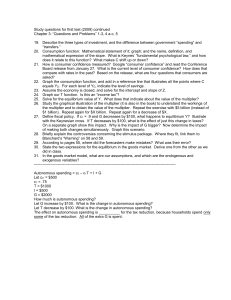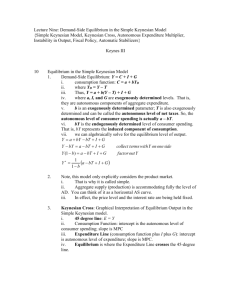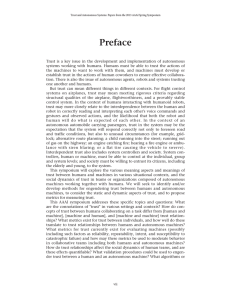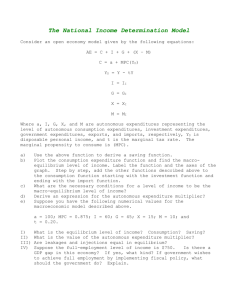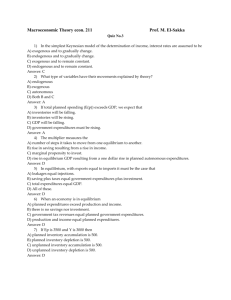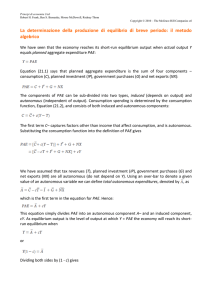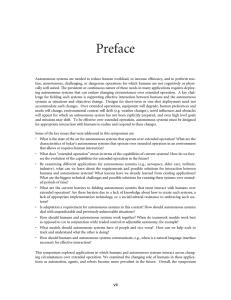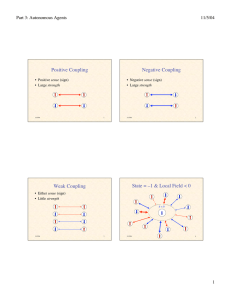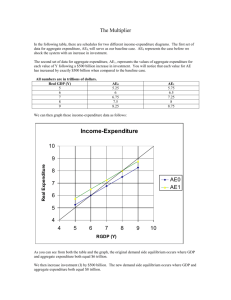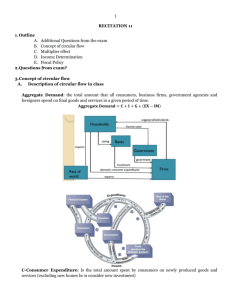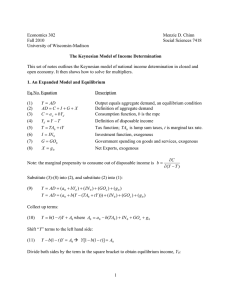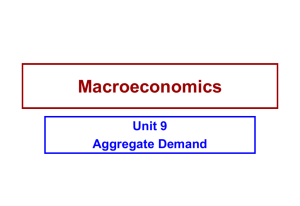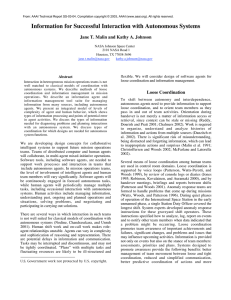Autonomous consumption In this Keynesian consumption function
advertisement
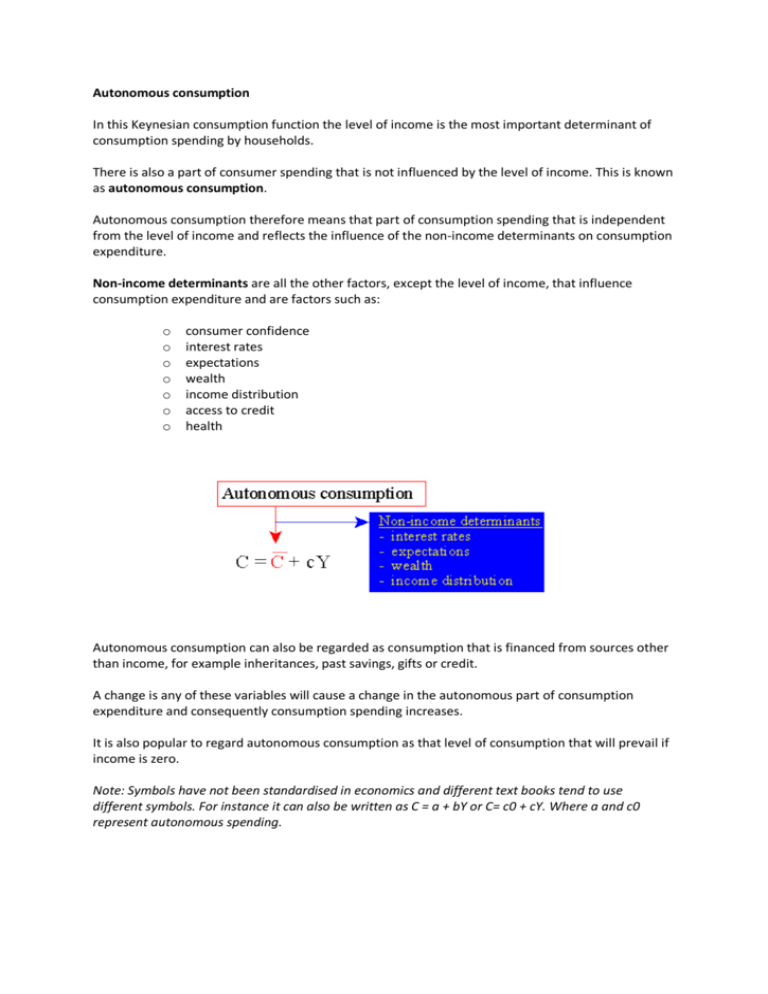
Autonomous consumption In this Keynesian consumption function the level of income is the most important determinant of consumption spending by households. There is also a part of consumer spending that is not influenced by the level of income. This is known as autonomous consumption. Autonomous consumption therefore means that part of consumption spending that is independent from the level of income and reflects the influence of the non-income determinants on consumption expenditure. Non-income determinants are all the other factors, except the level of income, that influence consumption expenditure and are factors such as: o o o o o o o consumer confidence interest rates expectations wealth income distribution access to credit health Autonomous consumption can also be regarded as consumption that is financed from sources other than income, for example inheritances, past savings, gifts or credit. A change is any of these variables will cause a change in the autonomous part of consumption expenditure and consequently consumption spending increases. It is also popular to regard autonomous consumption as that level of consumption that will prevail if income is zero. Note: Symbols have not been standardised in economics and different text books tend to use different symbols. For instance it can also be written as C = a + bY or C= c0 + cY. Where a and c0 represent autonomous spending.

